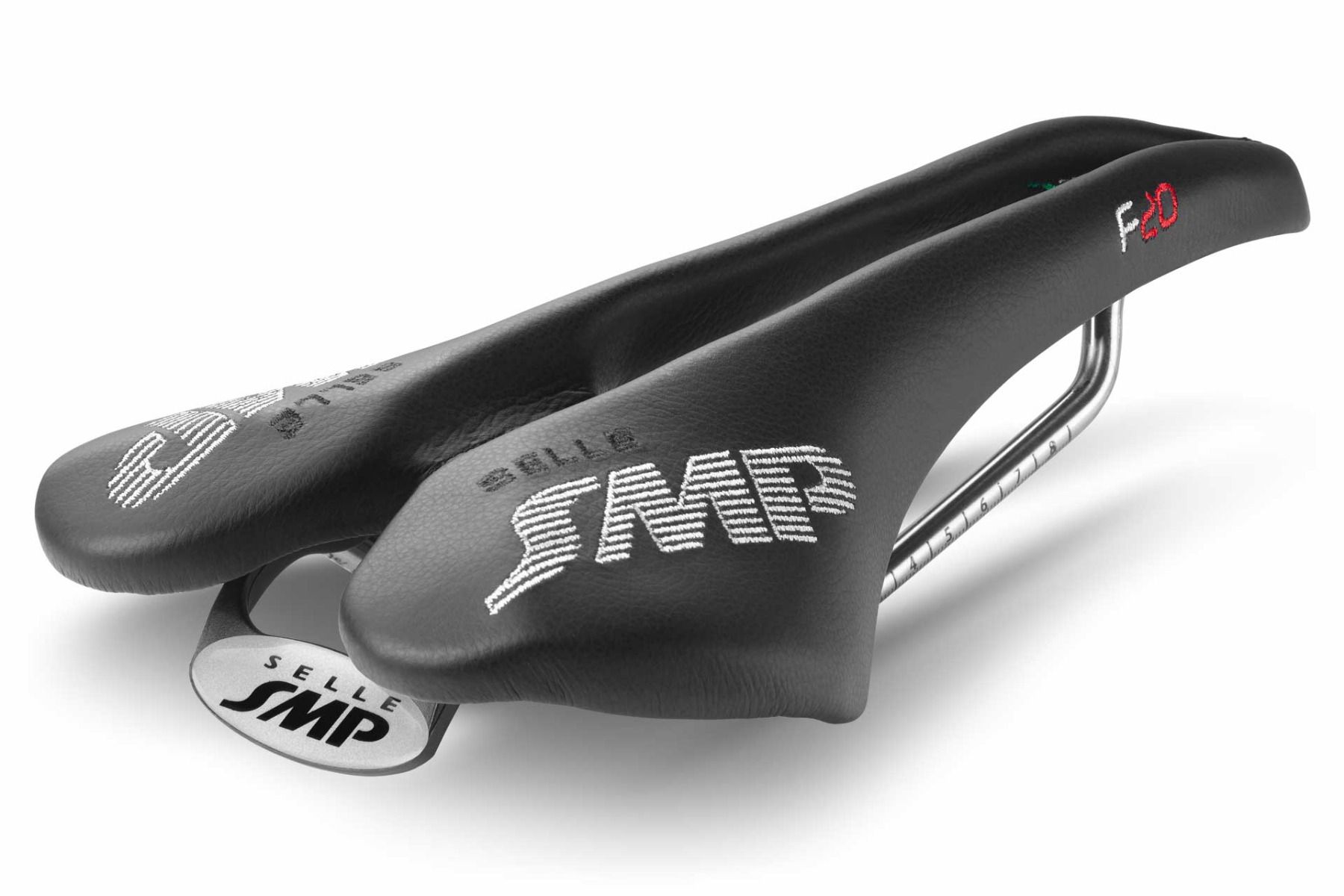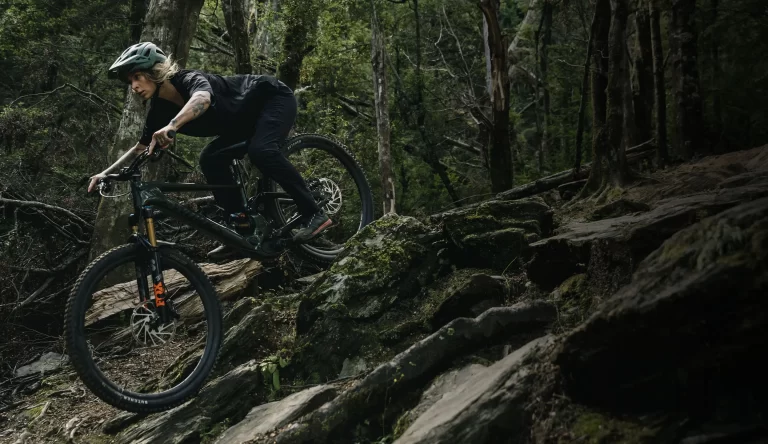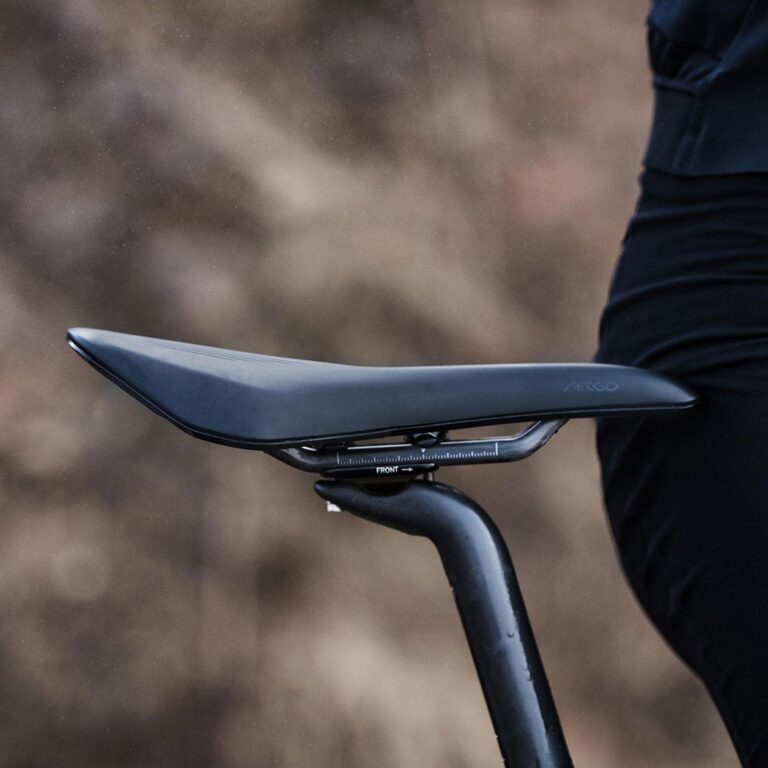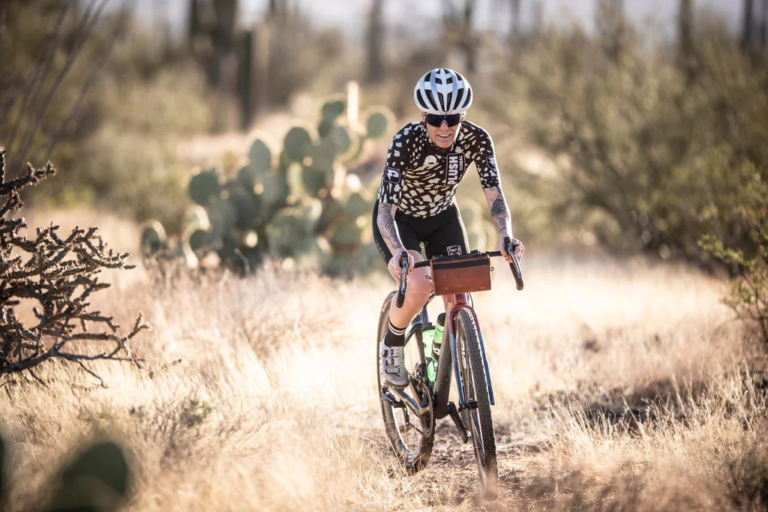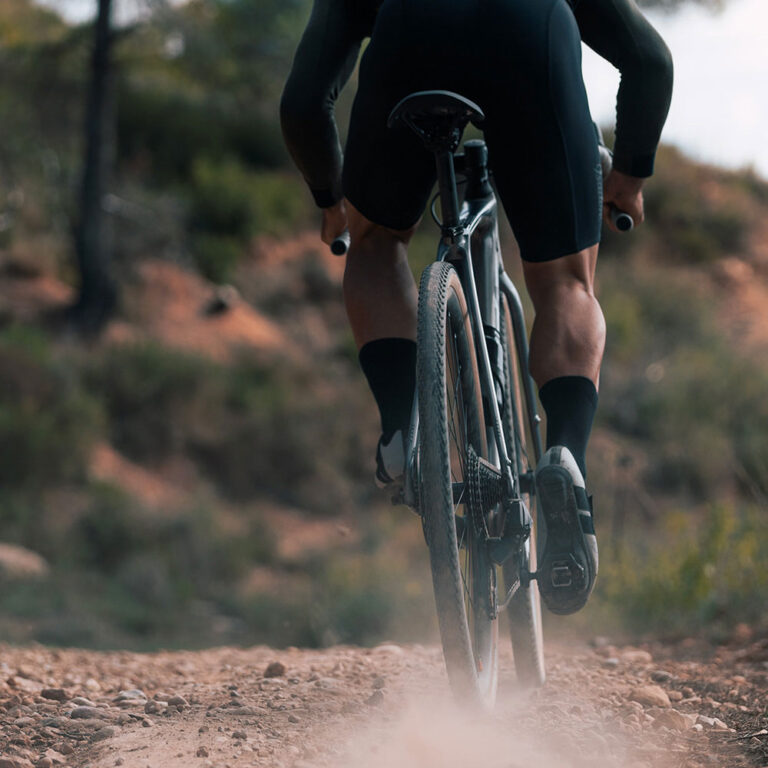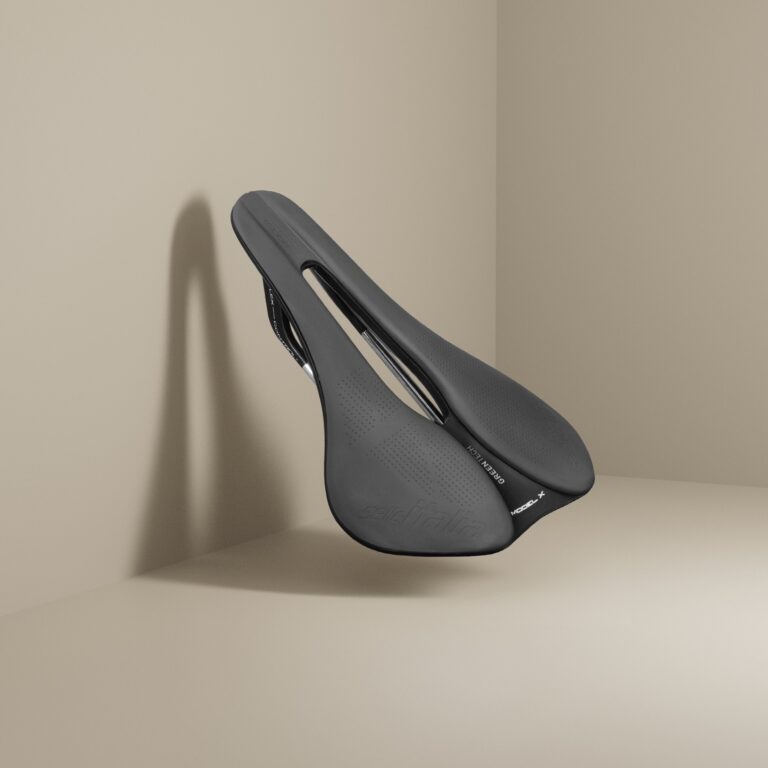How to Choose a Road Bike Saddle
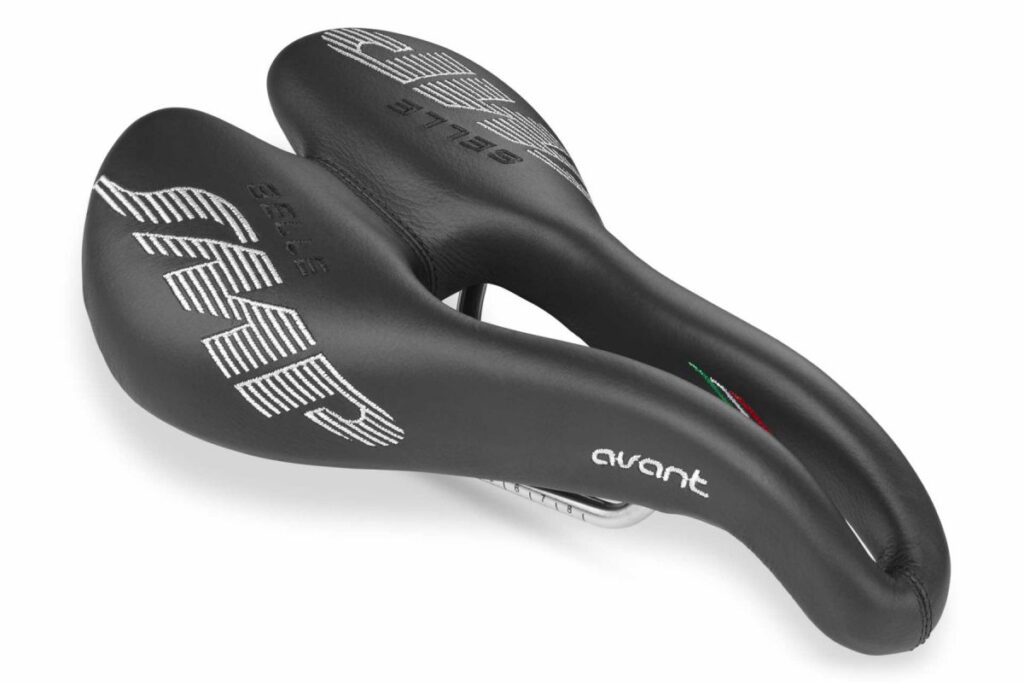
How to Choose a Road Bike Saddle: A Deep Dive into Comfort & Performance
The road bike saddle, often underrated yet undeniably essential, plays a pivotal role in shaping your cycling experience. Like a well-tailored suit, the perfect saddle complements your anatomy, riding style, and cycling ambitions, ensuring that every mile is more memorable than the last.
The Unsung Hero of Cycling
Every part of a bike has its significance, but the saddle stands out. It’s your primary point of contact, serving as a bridge between your body’s efforts and the bike’s response.
A Closer Look at Saddle Shapes

Much like seats in cars, saddles have their unique designs tailored for specific needs:
- Flat Saddles: Versatility is the key. With a consistent profile, they cater to dynamic riders who constantly change positions.
- Curved Saddles: These come with a distinctive upward curve, promoting a single, consistent position for those who prefer stability over movement.
Width – A Critical Dimension

The Substance of the Saddle: Materials
Your sit bones, the bony structures you feel when you sit on a hard surface, determine the saddle width you need. Using a sit bone measuring tool at cycling shops can guide you to the perfect width.
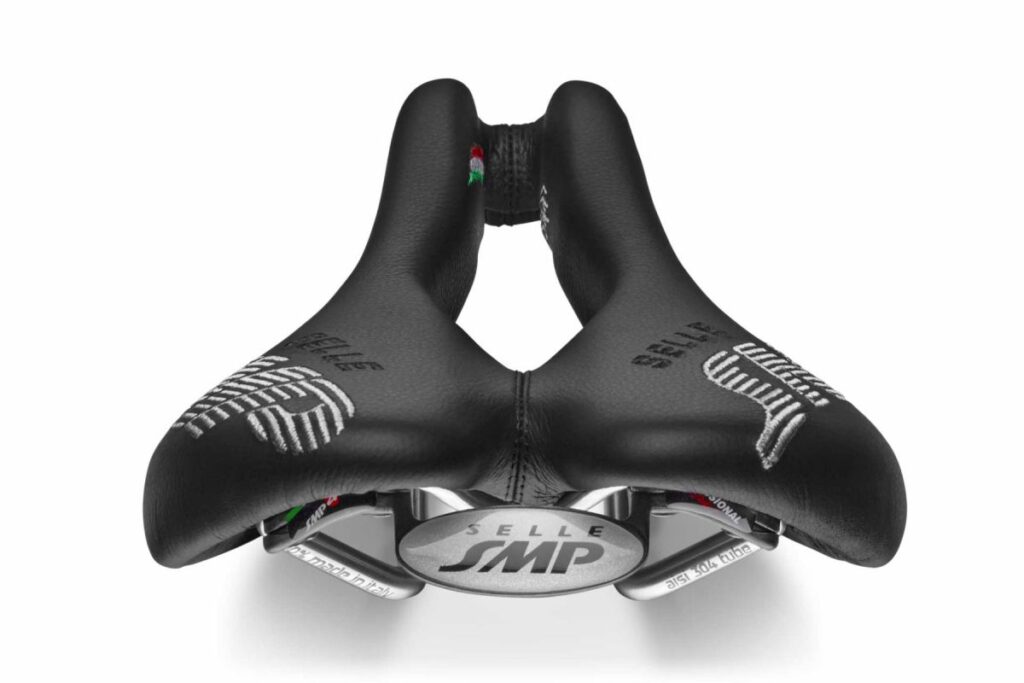
Padding: Foam offers a balance of support and elasticity. It’s resilient, holding up to countless hours of riding. Gel conforms to your shape, giving an immediate cushioning effect. However, it might not be as enduring as foam.
- Cover: Leather, especially in high-end saddles, offers a personalized fit over time. It’s the “denim” of saddle materials – it gets better with age. Synthetics, on the other hand, promise consistency, weather resistance, and a plethora of design options.
Beyond Gender Labels
While gender-specific designs provide initial guidance, personal anatomy and comfort preferences should be the ultimate deciders.
Cut-outs, Channels, and Comfort

Think of these as pressure relief zones. They are particularly useful for riders sensitive to extended pressure in the central saddle region. Trial and error play a role here, as one person’s comfort oasis might be another’s discomfort zone.
Making Sense of Price Points
Price often reflects materials, brand prestige, and research investment. While a higher price can indicate a quality product, personal comfort remains paramount. Sometimes, a mid-range saddle can feel better than a top-tier one.
Adjust, Test, Tweak, Repeat

Finding the right saddle is half the battle; positioning it correctly completes the journey.
- Height: Influences pedal stroke efficiency.
- Tilt: Affects pressure distribution.
- Fore/Aft Position: Alters your reach to the handlebars and pedals.
Remember, micro-adjustments can lead to macro differences in comfort.
Underappreciated Art of Test Rides

A saddle might boast rave reviews, but your personal experience could differ. A test ride provides insights no review can.
Learning from Post-ride Feedback
After each ride, do a quick body check. Persistent discomfort, even minor, warrants attention.
Analyzing Your Ride
Your saddle should match your ride. Racing, touring, and commuting each present unique challenges and needs.
Longevity & Care
Durability is a trait of good saddles, but periodic maintenance, like cleaning and, for leather saddles, conditioning, can extend lifespan.
Rail Talk

Rails, often overlooked, are critical. They affect saddle height, tilt, and fore/aft position. Materials vary:
- Steel: Affordable and durable.
- Titanium: Combines lightness with flex for shock absorption.
- Carbon: Premium, ultra-lightweight, but requires careful handling.
The Weight Game

For the casual rider, a few grams might not matter. But racers, especially in hill climbs or time trials, might prioritize saddle weight.
Saddle Accessories and Adaptations
From saddle bags to rain covers, various accessories can enhance your cycling experience. Additionally, innovations like split-nose saddles or those with integrated rear lights offer unique benefits and solutions to specific problems.
Return Policies & Warranties
Given the investment and the critical role a saddle plays, understanding return policies can save potential future frustrations. A warranty is an added bonus, ensuring you get value for your money.
Conclusion
Selecting a road bike saddle is a personal journey, a blend of science, personal preferences, and real-world testing. In the grand theater of cycling, where every component has its part to play, the saddle takes center stage, ensuring every performance is a standing ovation. With this guide, may your next ride be your best yet!
John
Useful Links
How to fit a women’s bike saddle
FAQ’s
How should a saddle fit on a road bike?
A well-fitted saddle on a road bike is critical for comfort, efficiency, and injury prevention. Here are several key aspects to consider for an appropriate saddle fit:
- Position:
- Height: When you sit on the saddle with your heel on the pedal (at the bottom of the pedal stroke), your leg should be straight. When you pedal with the ball of your foot, this will give you a slight bend in the knee.
- Fore/Aft Position: With the pedal at 3 o’clock (horizontal), a plumb line dropped from the bony protrusion just below your kneecap (the tibial tuberosity) should intersect the pedal spindle.
- Saddle Level:
- For most riders, the saddle should be level. If the saddle tips downward, you might slide forward, putting pressure on your hands, arms, and lower back. If it tips up, it could cause discomfort or pressure in the perineal area.
- Width:
- Saddles come in various widths. A saddle that’s too narrow won’t provide adequate support, while a saddle that’s too wide might cause chafing. The ideal saddle supports your sit bones (ischial tuberosities) effectively. Many bike shops offer “saddle sizers” which can measure the distance between your sit bones to help you select the right width.
- Shape & Curvature:
- This is a more personal preference. Some riders prefer a flat saddle while others like a bit of curvature. Also, some saddles have a central cut-out or channel which can relieve pressure in the perineal area for some riders.
- Padding:
- The amount of padding is also a personal preference, but be wary of thinking “more padding = more comfort.” For longer rides, a too-soft saddle can actually lead to more discomfort. Your body sinks into the padding, which can put pressure on soft tissues.
- Material:
- Saddles come in various materials from leather to synthetic. Leather saddles, like those made by Brooks, can last a long time and conform to your body, but they may require more maintenance. Synthetics tend to be lighter and can be more weather-resistant.
- Trial and Adjustment:
- No matter how carefully you choose a saddle based on recommendations and measurements, the real test is how it feels on a ride. Spend time on the saddle and adjust as necessary. Some bike shops offer demo saddles so you can try before you buy.
- Professional Bike Fit:
- If you’re serious about cycling or if you’re experiencing discomfort despite trying different saddles, consider getting a professional bike fit. These can be invaluable in ensuring not only the right saddle fit but the overall fit of the bike to your body.
Remember, what’s most comfortable for one person might not be for another. It can take time and potentially trying multiple saddles to find the right fit, but it’s worth the effort to ensure comfort on long rides.
How do I know what size road bike saddle I need?
The size of a road bike saddle primarily refers to its width. It’s essential to select a saddle width that corresponds to the width of your sit bones (ischial tuberosities) to ensure comfort and proper weight distribution. Here’s how to determine the right size for you:
- Measure Your Sit Bones:
- DIY Method: Sit on a piece of corrugated cardboard or a foam pad for a few minutes. When you stand up, you’ll notice two compressed areas. Measure the distance between the centers of those two indentations – that’s approximately your sit bone width.
- Bike Shop Method: Many bike shops have “saddle sizers” or “sit bone measuring devices.” These tools help to accurately measure the distance between your sit bones.
- Saddle Width:
- Once you know your sit bone measurement, you can choose a saddle. Generally, the saddle width should be at least as wide as your sit bones plus some additional millimeters for padding and movement. Many saddle brands will offer small, medium, or large options, and they will typically provide recommendations based on sit bone measurements.
- It’s worth noting that riding styles can also influence saddle size. For example, aggressive racing positions might require narrower saddles than upright endurance positions. So, you’ll have to consider both your sit bone measurement and your typical riding style.
- Trial and Error:
- While sit bone width is an essential factor, there are other aspects of saddle design that can influence comfort, such as saddle shape, padding, and any cut-outs or channels. As such, it might take trying a few saddles before finding the perfect fit.
- As mentioned earlier, some bike shops offer demo saddles. This allows you to test a saddle on a few rides before committing to purchase.
- Consider Other Factors:
- Length: While width is crucial, some riders also have a preference for a particular saddle length. Some might prefer shorter nose saddles, especially women or those who remain seated and don’t move around on the saddle much. In contrast, others prefer a longer nose for more positioning options.
- Gender Specific Designs: Women generally have wider sit bones than men, so many manufacturers offer women-specific saddles. However, personal anatomy varies widely, so some women find men’s saddles comfortable and vice versa.
- Professional Bike Fit:
- If you’re uncertain or if you’ve experienced discomfort on multiple saddles, consider investing in a professional bike fit. A bike fitter will not only help you select the right saddle but will also ensure that your entire bike setup is tailored for comfort and efficiency.
In summary, while measuring your sit bone width provides a good starting point, the perfect saddle also depends on individual preferences, riding style, and anatomy. It can be a process of trial and error, but finding the right saddle is crucial for long-term comfort and performance.
Is a wider road bike saddle better?
Whether a wider road bike saddle is “better” depends on the rider’s anatomy, riding style, and personal preferences. Here are some factors to consider:
- Sit Bone Width: The most crucial factor in determining saddle width is the distance between the rider’s sit bones (ischial tuberosities). If the saddle is too narrow, the sit bones won’t be adequately supported, leading to discomfort or pressure on soft tissues. On the other hand, if a saddle is too wide, it could lead to chafing or pressure on the inner thighs.
- Riding Style: Your position on the bike can influence the saddle width that’s best for you.
- Aggressive, Aerodynamic Position: Riders who lean forward, with a significant bend at the hips, might rotate their pelvis forward. In this position, a slightly narrower saddle might be more comfortable since the effective width between the sit bones can decrease.
- Upright Position: Riders who sit more upright, common in endurance or relaxed riding, will likely benefit from a wider saddle that offers more support under the sit bones.
- Gender Considerations: While there’s a lot of individual variation, women generally have wider sit bones than men. As a result, women-specific saddles are often slightly wider and shorter-nosed compared to men’s saddles. However, some women find men’s saddles comfortable and vice versa, so personal anatomy and preference play a big role.
- Padding and Material: The presence and type of padding can also play a role. A wider saddle with minimal padding might feel very different from a narrower saddle with plush cushioning. The saddle’s cover material can also affect perceived comfort and friction.
- Duration of Rides: For short commutes or casual rides, a wider, cushioned saddle might feel more comfortable. However, for longer rides, too much cushioning can cause pressure points, while a properly fitted, slightly firmer saddle may be more comfortable.
- Trial and Error: Saddle comfort is highly individual. Even with the “right” width, other factors like the saddle’s profile, curvature, and any cutouts or channels can influence comfort. It’s not uncommon for riders to try several saddles before finding the best fit.
In summary, a wider saddle isn’t inherently “better” or “worse.” It’s essential to find a saddle width that aligns well with your anatomy and complements your riding style. Proper sit bone support is crucial, but so is considering the overall shape, design, and feel of the saddle in practice.
Is a wide or narrow road bike saddle better?
Whether a wide or narrow road bike saddle is “better” is subjective and depends on several factors. Here’s a breakdown of the advantages of each and the situations or rider profiles they might best serve:
Narrow Saddle:
Advantages:
- Aggressive Riding Positions: A narrower saddle can be more comfortable for riders who maintain an aggressive, aerodynamic position on their road bike. When leaning forward, the pelvis rotates, which can make the effective width between the sit bones decrease.
- Less Thigh Interference: For those who have a high cadence or who frequently pedal out of the saddle, a narrower saddle might reduce the chance of inner thigh or hamstring chafing.
- Weight: Narrower saddles can be lighter, which might be a consideration for competitive riders looking to save every gram.
Best For:
- Racers or performance-oriented riders.
- Those with a more forward-leaning posture.
- Riders with naturally narrower sit bones.
Wide Saddle:
Advantages:
- Upright Riding Positions: A wider saddle can provide better support for riders who maintain a more upright posture, common in endurance or touring rides.
- Sit Bone Support: For riders with wider sit bones, a broader saddle ensures that the bones are adequately supported, reducing the risk of discomfort or pressure on soft tissues.
- Potentially Better for Long Rides: With proper fitment, a wider saddle might distribute pressure more effectively over long durations, reducing the risk of pressure points.
Best For:
- Endurance riders or those who prioritize comfort over aerodynamics.
- Those with a more upright riding posture.
- Riders with naturally wider sit bones, often (but not always) women.
General Tips:
- Sit Bone Measurement: Regardless of riding style, it’s essential to ensure the saddle width corresponds well with the rider’s sit bone width. An incorrectly sized saddle, whether too narrow or too wide, can lead to discomfort.
- Personal Preference: Saddle comfort is highly individual. Even if a saddle seems theoretically perfect based on measurements and riding style, it might not feel right in practice.
- Trial and Error: It’s beneficial to test ride saddles before making a final decision. Some bike shops offer demo programs that allow riders to try out different saddles.
- Professional Bike Fit: If someone is serious about cycling or if they’ve experienced persistent discomfort, a professional bike fit can be invaluable. It can help not just with saddle selection but with the overall ergonomic setup of the bike.
In conclusion, neither wide nor narrow saddles are inherently “better.” The ideal choice depends on the rider’s anatomy, riding style, and personal preferences. It’s essential to find a balance that offers support, comfort, and efficiency tailored to the individual.
What is a bike saddle sizer?
A bike saddle sizer, sometimes referred to as a sit bone measuring device, is a tool designed to help determine the width of a rider’s sit bones (ischial tuberosities). Knowing the distance between the sit bones can help a rider choose the most appropriately sized saddle for maximum comfort and support.
Here’s how a typical bike saddle sizer works:
- Material: The sizer often consists of a piece of foam or gel padding mounted on a firm base. Some sizers might have a grid or measuring scale printed directly on them to make measurement easier.
- Usage:
- The rider sits on the sizer with their weight evenly distributed, similar to how they’d sit on a bike saddle.
- After sitting, the rider stands up, and the foam or gel will have two indentations where the sit bones pressed down.
- Measurement:
- The center-to-center distance between the two indentations represents the width between the rider’s sit bones.
- With this measurement, riders can then select saddles that are appropriately sized to support and distribute their weight properly.
Many bike shops have saddle sizers available and can help customers with this process. Once you have your sit bone measurement, you can look for saddles that are designed to fit that width, taking into account any additional considerations such as your riding style and posture on the bike. Remember, while the width of the saddle is essential, other factors like the saddle’s overall shape, padding, and curvature also play a role in overall comfort.
